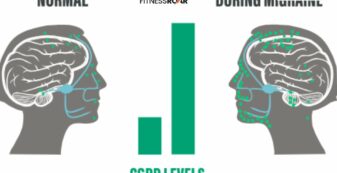Liver Twitching: What You Need to Know

Liver Twitching: What You Need to Know

This section will explore liver twitching, a sensation sometimes described as tremors, spasms, or involuntary muscle movements in the abdomen.
The liver itself is not a muscle and therefore cannot twitch. However, you might feel sensations near the liver due to movement in surrounding muscles or organs.
While liver twitching itself isn’t a direct liver issue, it can be a sign of underlying problems. Understanding the cause behind the twitching is crucial to determine its severity and seek proper medical attention if necessary.
Also Read: Feeling Tired? Try These Superfoods
Cause of Liver Twitching
The Liver
The liver is the largest and most vital organ in our body. It acts as a filter, processing nutrients from food, removing toxins from the bloodstream, and producing essential proteins and enzymes. It also plays a crucial role in blood clotting, cholesterol regulation, and bile production, which aids digestion.
Beneath the Surface
Since lier twitching isn’t a direct liver function, let’s explore some underlying reasons you might feel these sensations:
- Hepatitis: Inflammation of the liver caused by viruses, autoimmune disorders, or toxins can irritate nearby tissues and nerves, leading to twitching.
- Cirrhosis: Severe scarring of the liver disrupts its function and can cause a buildup of toxins, potentially affecting the nervous system and causing tremors or muscle spasms.
- Certain medications (e.g., some cholesterol meds) or exposure to toxins (e.g., heavy metals) can affect the liver and indirectly lead to muscle twitching.
- Conditions like electrolyte imbalances or low blood sugar can cause widespread muscle twitching, including those near the liver area.
- Issues like Parkinson’s disease or nerve damage can cause tremors or involuntary muscle movements throughout the body, which might be felt near the liver.
- Anxiety, stress, or muscle strain in the abdominal region can also mimic liver twitching sensations.
It’s important to note that this list is not exhaustive, and a medical professional can accurately diagnose the cause of your liver twitching.
Is Liver Twitching a Serious Symptom?
Liver twitching itself may not be a serious symptom, but it’s crucial to understand the underlying cause for proper treatment. Here’s how to evaluate its severity:
Consider these factors:
- Frequency and Duration: Occasional, brief twitches are less concerning than frequent, prolonged ones.
- Intensity: Mild tremors are less worrisome than violent spasms.
- Accompanying Symptoms: Fever, fatigue, nausea, jaundice (yellowing of skin/eyes), or changes in bowel habits suggest a more serious issue.
Seek medical attention immediately if you experience:
- Severe or persistent twitching: Disruptive to daily activities or causing significant discomfort.
- Accompanied by concerning symptoms: As mentioned above, fever, fatigue, nausea, jaundice, or changes in bowel habits can indicate a serious underlying condition.
- Sudden onset: Especially with no prior history of twitching or risk factors.
- Twitching along with confusion or mental fog: This could point to a more severe liver complication called hepatic encephalopathy.
If you experience any liver twitching, it’s always best to consult a doctor for a proper diagnosis. Early detection and treatment of any underlying condition can significantly improve your health outcomes.
Remember: This information is for educational purposes only and should not be a substitute for professional medical advice. Always consult your doctor with any health concerns.
Also Read: Health Benefits of Zumba
Information on Treatments
Liver twitching itself isn’t treated directly, but rather the underlying cause. Here’s an overview of potential treatment approaches:
Liver Diseases: Treatment depends on the specific condition. Hepatitis may involve antiviral medications, while cirrhosis might require medications to manage complications. In severe cases, a liver transplant may be necessary.
Medications and Toxins: If medications are causing the issue, your doctor might adjust your prescription. In cases of toxin exposure, treatment aims to eliminate the toxin and support liver recovery.
Metabolic Disorders: Depending on the disorder, treatment may involve dietary changes, medications, or electrolyte replacement therapy.
Nervous System Disorders: While there’s no cure for most neurological conditions, medications can help manage tremors and improve quality of life.
Muscle relaxants: In some cases, medications can help alleviate muscle twitching and spasms.
- Diet: A healthy diet low in saturated fats, processed foods, and sugar can support liver function.
- Exercise: Regular physical activity can improve overall health and potentially reduce stress, which may contribute to twitching.
- Alcohol Reduction/Elimination: Excessive alcohol consumption is a major risk factor for liver damage. Abstaining or limiting alcohol intake can significantly improve liver health.
- Maintaining a Healthy Weight: Obesity can increase stress on the liver. Losing weight can improve liver function.
Liver Transplant: In cases of severe liver damage or end-stage liver disease, a liver transplant may be the only option.
Remember: A medical professional can determine the best course of treatment based on the underlying cause and your overall health.
Also Read: Ways to Lose Mummy Tummy
In Crux
Early diagnosis and treatment of the underlying cause are crucial for managing your health effectively. If you experience liver twitching, consult a doctor to pinpoint the reason and get appropriate treatment.
By prioritizing your liver health, you can prevent future complications and enjoy a healthier life.
How much did you like Our detailed Liver Twitching: What You Need to Know? Please share your view in the comment box. Also, please share these Blogs with your friends on social media.
Recommended
RELATED ARTICLES

Buspar and Alcohol Interaction

Ubrelvy Side Effects: Risks and Benefits

How Swimming Strengthens Abs

Best Nutrition Guide for Runners

Understanding Suprapubic Pain

Kunal Kapoor’s Neck Workout Video

What to Eat Before a Cardio Workout

Winter Friendly Flours that You Must Try









